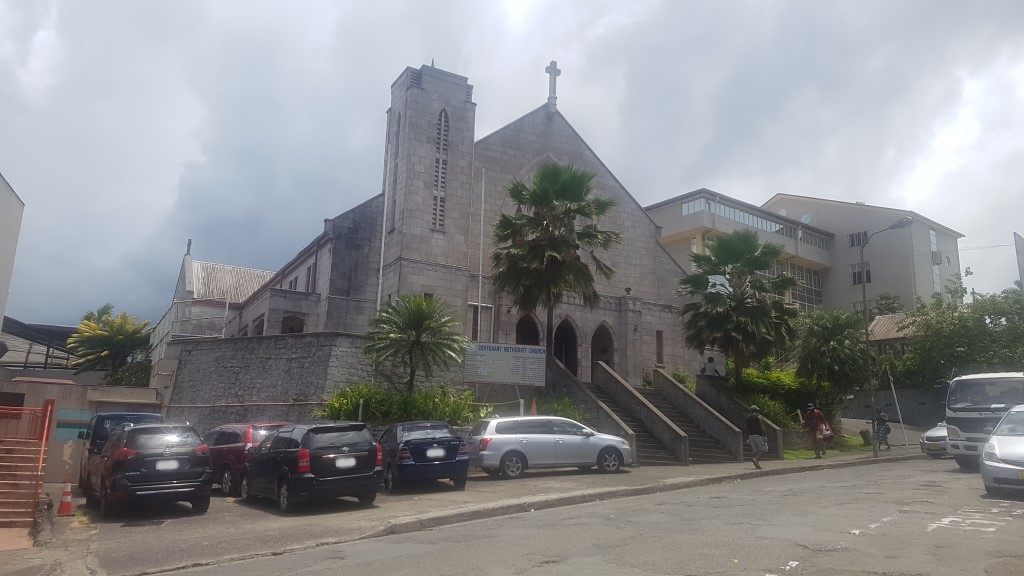Centenary Methodist Church
The Methodist Church of Fiji is the largest Christian denomination in Fiji. The Centenary Methodist Church was announced in 1935 during the Centenary celebrations of the first Wesleyan missionaries who arrived in Fiji. The building was opened in 1954, and ten years later the Methodist Church of Fiji became independent from Australia.
Last updated on 07 Jun 2025
Narrated by Meliki Mateni

Timeline
1901
On 10 October, European missionaries and Fijian ministers gathered on Bau Island for the annual Synod of the Australasian Methodist Overseas Missions. It was agreed to create an Indo-Fijian branch. As a result, the Methodist congregation was split into two branches, while the main office remained based in Australia.
1935
The Methodist Church celebrated 100 years since the first Wesleyan missionaries arrived in Fiji. The Centenary celebrations included an announcement that a new church would be built in the heart of Suva. A site on Butt Street was suggested.
1939
On 14 April the Fiji Synod recommended the sale of the Butt Street with the proceeds to be used to build the new church on the current site for an estimated £8000.
1946
Church representatives from the Indian and Fijian branches met together for the first time in a United Synod.
1948
On 12 February, the Board decided the Butt Street property would not be sold and the church would be built on the current site.
1950
Fundraising began to raise £27,000 needed to construct the church with a seating capacity of 850. Governor Sir Brian Freestone and the Fiji Times and Herald were amongst the first donors.
1951
The existing building on the site was removed and re-erected in Toorak. It served as a youth centre, a centre for representatives to stay during the Synods and a transit point for ministers between circuits.
1953
On 12 December, Ratu George Cakobau laid the foundation stone.
1954
The church was opened on 9 October by Rev Dr. George Calvert Barber, ex President-General of the Methodist Church of Australia. This function was attended by scenes of great enthusiasm, so much so that in the evening of the opening day there was a feast, singing by 42 choirs, and a service lasting from 7.30pm until the early morning. At the first ordination service in the church, two days after its opening, eleven ministers were ordained.
1964
Ten years later, a movement for independence known as Lotu Wesele ni Taukei culminated in the decolonisation of the Fijian Methodist Church. The Methodist Church of Australia approved the Fijian Methodist Conference and a new constitution known as the Yavu ni Vakavulewa. Reverend Setareki Tuilovoni was the first indigenous president of the Fijian Methodist Church.
References
Andrew Wainwright Thornley, Fijian Methodism, 1874-1945: the emergence of a national church (Canberra: Australian National University 1979).
Kirstie Close-Barry, A Mission Divided (Canberra, ANU Press: 2016).